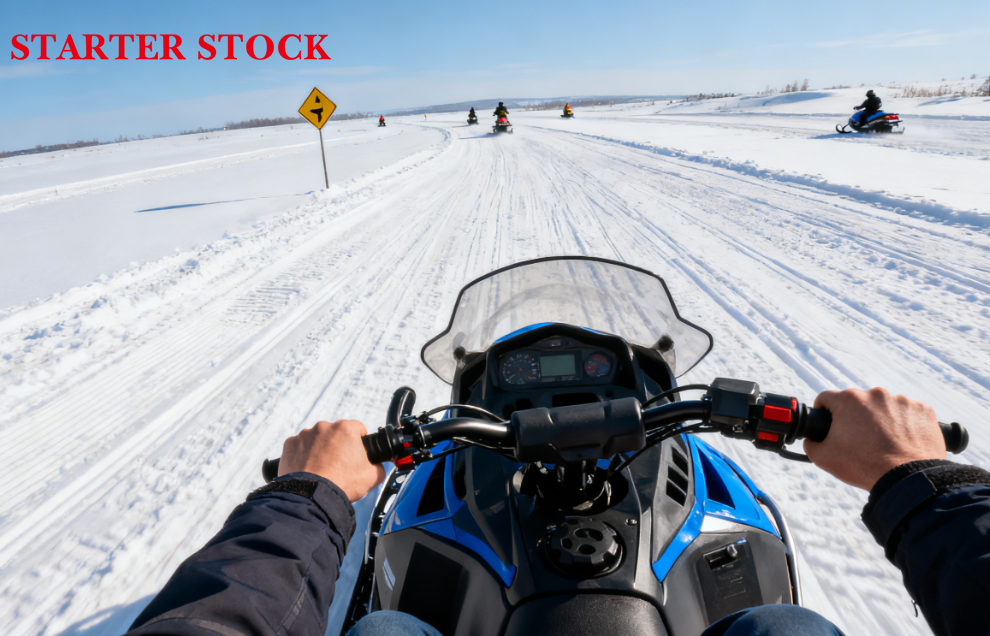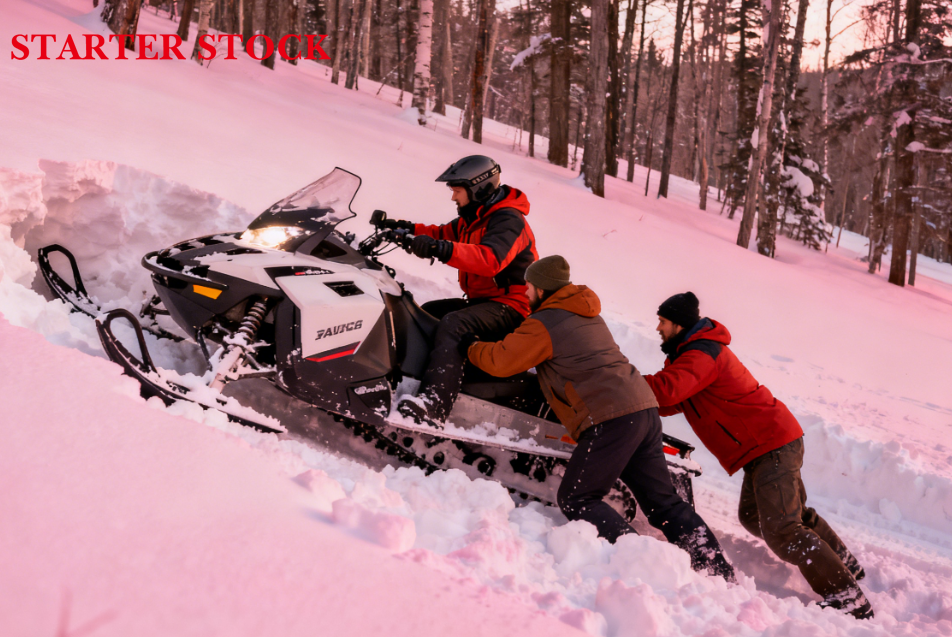Short answer: it’s not that hard to start. Long answer: it’s slippery, noisy, cold, sometimes exhausting, and unpredictable — in a good way. Depends a lot on where you go and what you expect.
I’ll be blunt. The first time I sat on a snowmobile I thought: this is easy. Ten minutes later I thought: hmm, okay, this needs attention. An hour later I was smiling like an idiot and calling everyone I knew. Then I got stuck in a drift and learned humility.
So here’s what it actually feels like.
The basics are easy.
On a groomed trail — smooth packed snow, signs, other riders not doing stupid stuff — you’ll be fine. Sit. Hands on bars. Thumb the throttle (or squeeze, depending on the sled). Keep your knees soft. Look ahead, not down. Most people get comfortable in 15–30 minutes. No secret ninja skills required.
But "fine" doesn’t mean perfect. The sled’s not a car. It turns by leaning more than by steering. Muscle memory matters. Relax your grip. If you hold on like it’s a lifeline, you’ll tire out fast.
Deep snow is where the lesson begins.

Powder is beautiful. Also tricky. The sled wants to sink. You’ll be moving your body constantly — forward for climbs, back for soft landings, to the side in turns. You’ll rock the sled. You’ll dig out the track more than once. It’s less about throttle and more about feeling the snow under you.
And yes, you will get stuck. Everyone does. Even pros. There’s an unspoken rite of passage: at some point you and a buddy will be heaving on a sled while laughing and cursing. That’s normal.

Speed isn’t the same as skill.
Riding slow is forgiving. Riding fast is another animal. At speed small bumps feel huge. I learned to keep my eyes far ahead — pick a point, aim for it. Don’t stare at the front bumper. Your body has to move with the sled; stand a bit, bend knees, let them absorb rhythm. If you tense up, the sled jerks and you lose control.
People think gas = fun. Sure. But control is where you don’t end up in a snowbank.
Cold makes everything harder.
Cold fingers = clumsy hands = mistakes. Goggles fog = panic for five seconds. Gut check: you can be a good rider and still hate being cold. The right gloves, layers, and a helmet that vents the right amount change everything. But even with great gear, a long, cold day is tiring. Your brain slows down. Focus slips. That’s when small mistakes happen.
Dress like someone who plans to stay outside. Not in style. In survival mode.
The machine matters.
Trail sleds, mountain sleds, crossover sleds — they all handle differently. Mountain sleds are lighter in the back, longer, meant to float in powder. That means you move your weight a lot. A heavy trail sled is stable at speed but awkward at slow maneuvers. If a beginner hops onto a super-aggressive machine, they’ll get scared or make bad moves.
Start on something predictable. If you rent, tell them you’re new. They’ll point you to a nicer starter machine.
It’s physical.
Not like running a marathon. But your legs, core, and grip get worked. Standing on the running boards, balancing, leaning — your quads will feel it the next day if you ride hard. Digging out a sled is a full-body task. You’ll laugh about it later. Maybe.
If you’re not active at all, you can still ride. But you’ll notice the effort after a day.
Mind matters almost as much as body.
Snowmobiling is attention-heavy. You constantly scan for shadows, branches, ice, dips. Your head is on a swivel. On long runs you can get mentally tired. That’s real. Experienced riders say it takes practice to keep your focus up when your body is also tired.
Also: ride within your limits. Confidence is good. Overconfidence leads to mistakes.
Riding with people helps a ton.
Go with someone who knows the trails. Watch them — how they shift their weight, when they brake, how they point the sled. If you get stuck, someone helps. If you are solo, that stuck moment is lonelier and harder. Group rides are safer, and a great way to learn fast.
Where you ride changes the difficulty scale.
Groomed trail, calm weather: easy.
Ungroomed trail, mixed snow: doable, more tiring.
Deep powder, hills, trees: hard.
Backcountry, avalanche terrain: requires training and gear — not for casual beginners.
If you only ever plan to do groomed trail loops, you’ll have fun and learn quickly. If you want mountain runs and backcountry? Expect to invest time, practice, and maybe take a course.
A few real tips (not polished how-tos):
Don’t stare at the sled. Look ahead.
Use your legs. Don’t lock your knees.
Warm hands = fewer mistakes. Gloves matter.
Don’t be ashamed to ask for help. Everyone’s been the new guy.
Get a buddy. It’s safer and more fun.
Bottom line:
Snowmobiling is easy enough to try and fall in love with in one afternoon. It gets harder the more ambitious you get — deeper snow, steeper slopes, higher speeds. The “difficulty” is part machine, part snow, part how you dress, and part your patience to learn the feel of the sled.
If you want my opinion: start slow, ride with people who know the area, wear good gloves, and expect a few embarrassing stuck moments. They make the stories later.
And yes — after a few rides you’ll be smiling a lot.